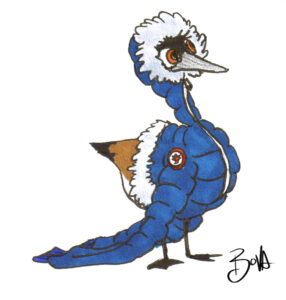 Canada Goose coats getting a bad rep
Canada Goose coats getting a bad rep
A STRANGE TREND is emerging on campus of late. Snarky comments, meaningful glances, and overt mockery are being tossed around like snowflakes in a blizzard. The unwilling target of all this disparagement? Wearers of Canada Goose parkas.
I know there’s something to be said for the fact that Canada Goose lines many of its coats with real fur, but strangely that doesn’t seem to be why people packing the parkas are being attacked. Rather than arguing in the name of ethical animal treatment, most working-class critics seem to be more riled up about the popularity of the coat than anything else.
Sure, Canada Goose winter coats aren’t exactly cheap. Ranging in price from about $400 to upwards of $700, these parkas cost more than a pretty penny, but there’s a lot of sense in spending cash on a quality coat.
I’ve had a new winter coat every year since I started university. Continually trying to find a jacket that would actually keep me warm, it wasn’t until goose down entered my life that I was able to banish the winter shivers.
While I didn’t spring for a Canada Goose coat myself, I can understand paying the big bucks when you get exceptional quality in return. God knows the relationship between cost and quality has been heading downhill in recent years, so why not spend a ton of cash if you’re getting what you really want for once?
Another benefit to Canada Goose coats is their anti-live-plucking stance when it comes to how they obtain their down. Committed to only one down distributor–and a Canadian company to boot–Canada Goose seems to have most of their ethics in order, especially for such a large company.
These coats may be so popular that you can’t take two steps out your door without counting a dozen, but there’s a reason for it. This is a quality product from an ethical company—founded and run in the country—that keeps as much of their spending in Canada as possible. If you ask me, more of us should be wearing Canada Goose coats, starting with the ice-cold critics.
—Jaclyn Lytle





